According to You: GM’s 12 biggest missed opportunities
The comments quoted in this article have been edited lightly for clarity and house style. —Ed.
Asked and answered, as they say in trial law. We can’t thank you enough for participating in Hagerty’s According to You series, in which we pose questions to intrigue and possibly enlighten everyone participating. The latest query: What was General Motors’ biggest missed opportunity?
If you are only reading and not commentating, why not make this episode your first contribution? While our answers were rather comprehensive, it would be nice to know if we collectively missed something!
So without any further ado, here are twelve of General Motors’ biggest missed opportunities.
Buying and selling brands

Has GM done too much of this? Hagerty Community member @Reiner frames it well: “Its biggest mistake was selling Lotus. Its second biggest mistake was acquiring Lotus. Its third biggest mistake was selling Opel, Vauxhall, and Saab. Its fourth biggest …”
To which I must proclaim: For all that’s good and right with the world, never forget that GM spent an eye-watering two billion dollars to not buy Fiat. Two billion dollars, I tells ya!
The downsides of “Sloan Culture”

Longtime community member @hyperv6 made us put on our thinking caps. It’s hard to debate what he says.
We here want to pin the mistakes on the models but the truth at GM is the mistakes were made internally in the culture of how the company operated. The Sloan culture was good, as each division had mostly one main model and variations of that model.
As time rolled on, the divisions got more models and more variations of each model. This led to overlaps and competition between the divisions, and often mismanagement of these divisions. Then when GM rolled into the corporate-platform era, it began to lose money and make cars that really became just styling exercises and not specific models.
The divisions were always fighting each other. Chevy got the lead as it was stated they sold more cars so they got more say. Pontiac has many success over the years but nearly every one of them were due to breaking rules and lying to the corporation. The GTO broke the engine size rule. The SD-455, more broken rules. The Fiero was canceled and hidden till Pontiac could get it approved.
The now famed Trans Am hood decal was rejected by Bill Mitchell. So John Shinnella took the SD-455 Trans Am prototype and painted it black with gold stripes, just as Bill’s favorite bike, a John Player Special-liveried Norton. He then gave the car to Bill for him to drive. The paint and decal were approved.
It is sad but reform started with Bob Lutz, and cleaning up the cultural issues at GM continues to this day. This is why there were so many mistakes, and that’s why the company went broke. While not perfect today GM is much better, and it will be OK.
1923 Copper-Cooled Chevrolet

John wishes us to never forget a vehicle from 100 years ago. That’s right, a full century has passed since the 1923 Copper-Cooled Chevrolets hit the road, and they didn’t represent Charles Kettering’s proudest moment. Luckily he overcame this mistake to make the overhead valve V-8 just two decades later.
Community member @Mike agrees and adds a fantastic backstory to the equation.
The 1922 Copper-Cooled Chevrolet was rapidly discontinued and recalled (the only GM car ever to have a 100 percent recall) due to uneven cooling caused by poor cooling-fan design—front cylinders ran cool, rear cylinders ran hot.
In 1921, a Dayton inventor showed the GM folks his air-cooled engine design (SOHC, sodium-cooled valves) that used a squirrel-cage blower and calibrated ducting that provided even cooling front to back. GM didn’t listen, as it already had Boss Kettering’s design, which just had to be the right answer. History disproved that. Had Paul’s alternative design been adopted, air cooling might have come to GM 38 years sooner …
Ho-hum Hummer

The aptly named @Hummer H3 Owner wants to remind us that the Hummer used to be an exciting off-road vehicle for people with more limited budgets and not a massive flagship with a much smaller following. (For a bit of alternate history, check out this article about a pair of ill-fated 2000s concepts that might have saved Hummer brand. —Ed.)
Dropping the Hummer idea completely and never coming back with a mid-size, off-road SUV immediately after the turnaround was a mistake. The Hummer crowd is remarkably loyal and dedicated. The H3 adventure package put some real pressure on Jeep and the V-8 Alphas were and maybe still are impressive. The H3T on the other hand was simply ahead of its time.
And our very own @hyperv6 gives fascinating insight to go with this: “Hummer never should have been a brand. It should have been part of GMC. That has been corrected today: Bob Lutz said it was one of his greatest errors.”
Killing the Metro
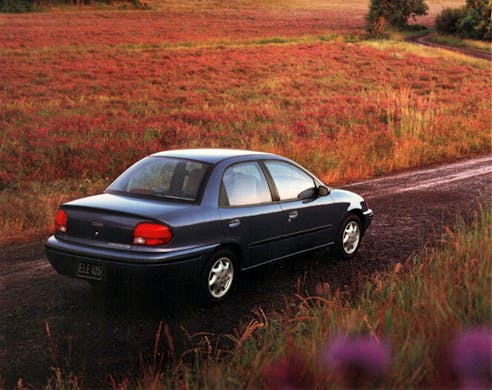
In the same vein as my foray into this question, the GM EV1, Jerry wants us to consider the “lowly, lovely Metro.” Or, as he puts it: “I bought my Metro nearly 30 years ago and got 45+ mpg. Nothing available comes close today. [Especially for its $8000-ish price tag, before discounts and incentives. — SM] What happened?”
Beholden to Holden?
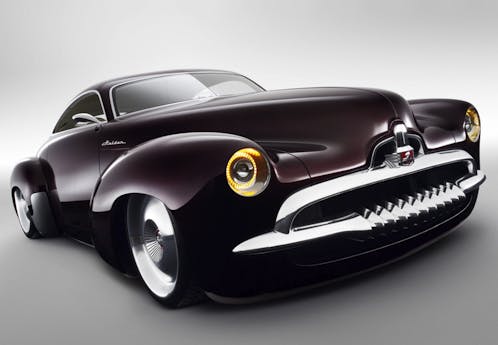
Richard has admiration for GM’s creations from the Land Down Under, and thinks Holden’s failure to launch was another one of GM’s big mistakes. Hard to argue with this!
I agree with most of the opinions here, but I really think that GM missed an opportunity by not importing the Australian line of Holdens to sell here as Holdens. GM already owned the factory, the cars were good, and I believe with proper marketing the line would have been successful, selling more cars and possibly saving the Holden brand from extinction, as well.
Even when it did bring in the Pontiac G8 and the Chevrolet SS, GM never really marketed them properly. Holden also had smaller, less expensive, civilian-quality cars as well that would have created a lot of interest.
Misguided minivans
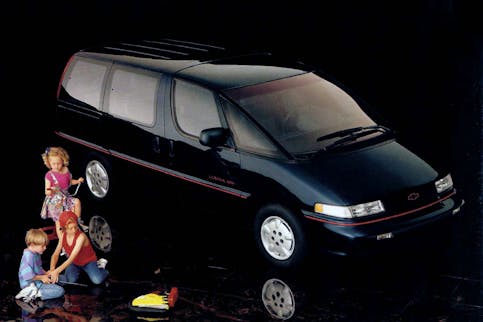
Vince says: “Let’s talk minivans. Trying to peddle the Chevy Astro van, followed by the Dustbusters from Pontiac, Olds, and Chevrolet, was a disaster. Talk about blowing it in the hottest segment in the mid-’80s throughout the ’90s.”
Hard to disagree with this, as Chrysler’s success was unanswered for so many years!
PhD-level bean-counting

Hagerty Community member @ParaboTech hits on a common theme we hear elsewhere, as the notion that overly cost conscious accountants (i.e. bean counters) are a big problem in the halls of General Motors.
With GM, it always seemed to be about the number crunchers. I can understand about 2008–9 era with bankruptcy at the door. But, if the GM powers really were into cars, they would’ve found a way to continue with Camaro way back then and also Fiero. Solstice and Sky were probably a tough sell at the time. Still would’ve been great to continue those two.
But @TG offers a good counterpoint: “I think John Z. DeLorean discovered what happens when you go the other extreme and cut the number crunchers and marketers out of the equation. They may have too much control sometimes … but they are there for a reason.”
The “not invented here” fallacy
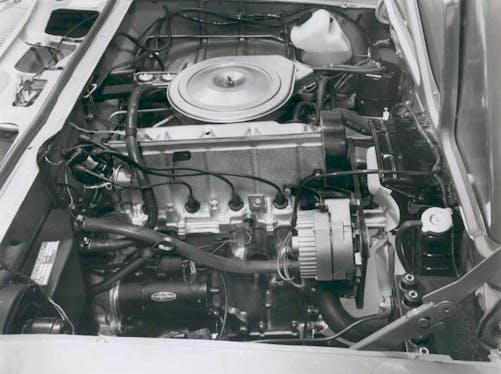
@Moparman gives this notion a twist, while offering the Chevy Vega’s 2300 engine as proof.
I’ll add the “designed by committee” problem, including the Vega being sacrificed on the altar of the bean counter. GM had a chance to make inroads against the import market, but the opportunity was squandered due to the refusal to use proven tech because of the “NIH” (not invented here) syndrome.
GM foisted dicey new tech to buyers with inadequate cooling, and no rust protection. It soured the consumer on what was actually a stylish small car that woulda, coulda, shoulda been a champion in the market.
Corvair and Fiero neglect
Does it seem logical to lump the Chevrolet Corvair and the Pontiac Fiero together? Both were significantly different than anything else available from GM in their respective time periods, so that’s perhaps why so many folks feel this way.
@Kern: I do not know if they would be considered the biggest missed opportunities or not, but I consider the second-generation Corvair and the 1988 Pontiac Fiero as innovative and leading-edge products in their time. As an automotive engineer, they are the only two GM products that I considered for my automotive collection.
@Dean: Not advancing the Corvair and Fiero. Both were so close yet so far from the promise they had. And I owned one of each.
@hyperv6 (in reply to @Dean): You have to consider the Corvair was very expensive to build versus a cheaper V-8 Camaro.
Also emissions regulations killed air-cooled engines. The Fiero was killed by the Corvette people; they feared sales being lost to a more powerful Fiero that was coming.
@Thomas: A multi Corvair owner (two Corsas and two vans), I am qualified to say that when the car-buying public sees near-new cars with oily rear ends, a certain stigma is generated. Viton pushrod tube seals were available but GM went with cheaper neoprene rings instead. Bad decision.
Also, and perhaps even more important from a legacy and lawsuit standpoint, was its decision to ignore the benefits of the supplementary transverse rear spring, which GM finally adopted and made standard for 1964 just one year before the complete rear-end redesign.
@Mike: Second-series Corvair. Exquisite design, fully independent rear suspension (not swing axle—take that, Ralph Nader!) and the worst of the oil leaks/popped fan belts of the earlier cars cured. And available with a turbo, like the first-series cars. Instead of touting all the improvements—both appearance-wise and mechanically—GM folded under Nader’s bad publicity and slunk away.
Playing it safe

Hagerty Community member @Perpetually Unimpressed thinks GM coulda taken more risks.
GM’s biggest missed opportunity has always been playing it safe. You want a company that commits to innovation? Go to Ford. Between company-wide racing bans, V-8 tech that hasn’t really changed since 1955 (new C8 flat-plane DOHC V-8 notwithstanding), timid rollout and commitment to EVs, and half-hearted development of truly interesting and innovative cars, risk is something to which GM seems chronically averse.
The big picture
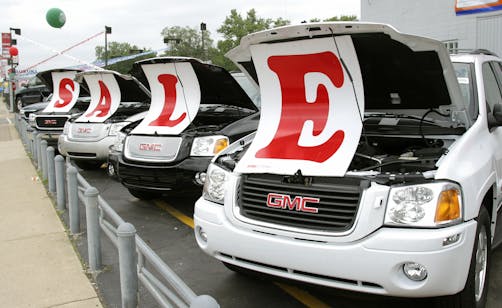
Perhaps Dale said it best, because it’s likely not one vehicle, one brand, one person, or one department of employees that inspired our initial question.
The missed opportunities happened much earlier than we realize. In the early 1960s, the connection between the “car guys” and “tech guys” promoted innovation and a product stream that dominated the market. The increasing control of the financial side of the company strangled both, often forcing key innovators out of the company or burying them, leading to ever more control by the bean counters and the eventual collapse of the company.
Divisions lost the incentive to innovate because they were marketing fronts only. Labor relations deteriorated, because when money is the only thing that matters, it’s where all the attention goes on all fronts. The more cost-focused the company became, the more innovation became buried and that led to losing more market share … and money. The diversification into Electronic Data Systems (EDS), Hughes, was a typical distraction for companies that lose their way in their primary arena.
***
Check out the Hagerty Media homepage so you don’t miss a single story, or better yet, bookmark it. To get our best stories delivered right to your inbox, subscribe to our newsletters.
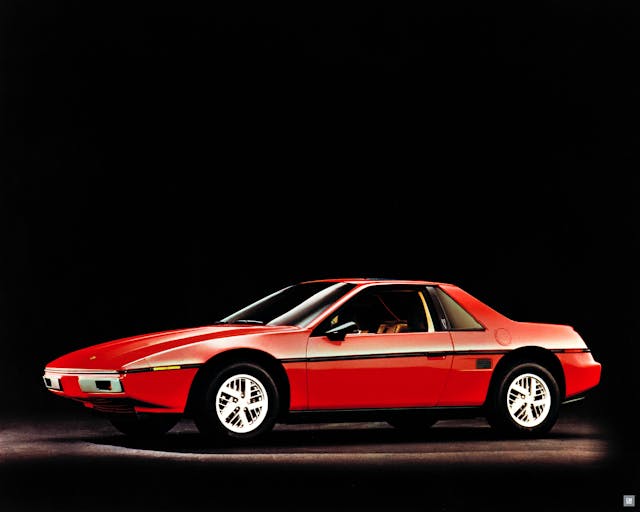

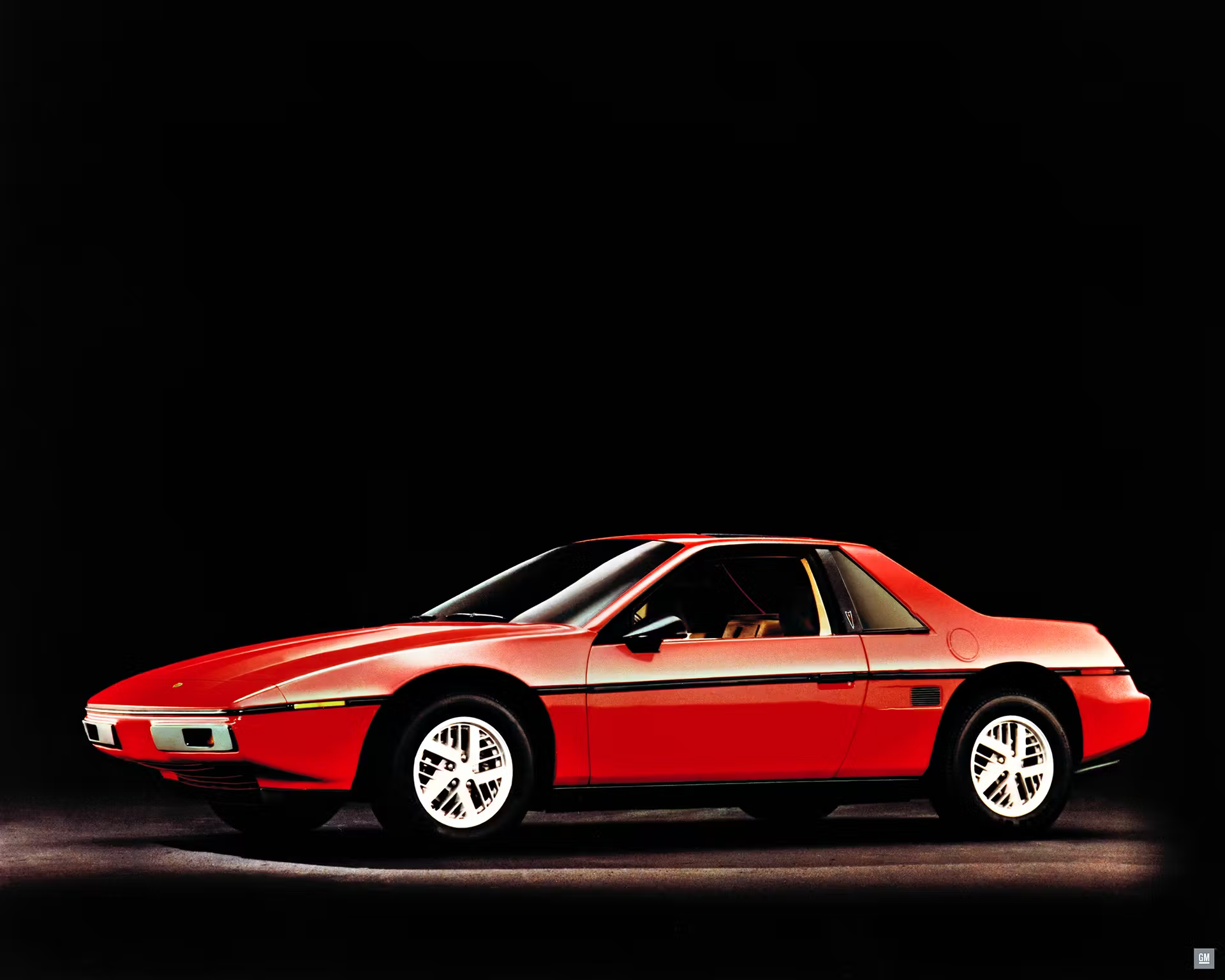


Regarding the “dustbusters,” did GM lose it in the execution? When the concept vehicle was shown, all the enthusiast mags clamored for production. Then they derided the production vehicles.
I would like to have a Fiero.
Me too, provided that you swap the Iron Duke engines in the early cars for something it should have had in the first place, a Quad 4 or Brazilian “Family Two” engine. The Fiero was a classic example of great GM engineering being done in by poor marketing and manufacturing. GM was paranoid that the Fiero would steal sales from the Corvette, so they purposely made it a performance dog. This was absurd, as the the Fiero was an entry-level car, while the Corvette was GM’s “halo” car, way out of the Fiero’s league.
If GM could bring back a Fiero-style car, I’d seriously consider it, if they could do the job right this time! The Corvette is way out of my price range, and has capabilities that can only be safely used on a racetrack, while a smaller, lighter, cheaper car, like the Fiero, would be more fun and more useful as a daily driver. “It’s much more fun to drive a slow car fast, than a fast car slow!” – Anonymous.
I believe the most recent GM mistake was the 3.6L V6 motor. Just a money pit, especially the early examples. You’d think that a timing chain engine would be bullet-proof and maintenance-free, compared to the timing belt motors. Poor design combined with an owners lack of maintenance would usually lead to a stretched timing chain or two, and a monster repair bill. Maybe the most recent versions of this turkey are better, but most of the early versions are now joining a parade to the scrap yards.
I can’t speak of GM back in the day as I’m “only” 42. I’ve owned GM cars my entire adult life up until 3 years ago. My last GM car was a 2007 Pontiac Grand Prix gt supercharged. Basically a gtp but that moniker was dropped that year. I ended up crashing the car to avoid slamming into somebody, it was basically unavoidable.
When it came time to look for a brand new car (an actual sedan). Where do you think I looked? You’d think probably GM since those are what I’ve owned? No! Not one GM sedan was interesting in the slightest. Sure, there was the CTS-V but that was wayyyyy out of my price range. The only model that was a tad bit interesting that was in my budget was a 2020 Buick Regal GS. The main problem with that car besides having a 3.6, which I have mixed feelings about was that it’s ugly. Couldn’t barely find any for sale in my area when I was looking and it was basically the same price as a WRX Limited, Dodge Charger gt or Kia Stinger gt. Was slower than both the Stinger/WRX. I wanted awd but the Charger awd with a v6 was not what I wanted. Ended up going with the Kia Stinger gt awd. Has been nothing but reliable, can seat 5, can haul wheels, a TV, bikes, anything I can throw at it, is awd and gets through the snowy MN winters and is faster than the stock ws6 Formula I used to have. I’d also say the interior is nicer than any GM car I’ve ever owned. Never thought I’d own a Kia. I wanted an affordable sporty sedan, which GM has given up on since they last made the Pontiac G8 gt/Chevy SS.
After daily driving my Fiero Formula for nearly 15 years being stuck driving a FWD, 4-door is fairly infuriating now. Not a day goes by that I don’t remember how it felt putting that car through its paces and wishing I was still able to do so. I had such plans for the car but family came first so I’ll be rocking the Kia for a good while now.
I found the plastic early-1990’s GM minivans to be superior to the competition in several ways, including (but not limited to) the VERY flexible seating available, and the plastic body panels.
The Metro was a flimsy little “tin box” that deserved to be put to sleep.
“Also emissions regulations killed air-cooled engines.” That may be essentially true, but not for a LONG time after the end of the Corvair. GM could have easily kept he Corvair alive for another 20 years, if they chose to. The VW Beetle was sold here thru the 1979 model year, and the air-cooled Porsche 911 (an admittedly far more expensive car) through 1998.
And…I don’t see how, over time, GM could be called “risk-averse”; they took a LOT of risks, many of which sadly did not work out (some of which are noted in the article above, in fact). I would also note the LS4-powered FWD mid-sizers (Lacrosse Super, Grand Prix GXP, etc.) were something of a market risk.
Far better looking than the Crown Vic?! Those bloated looking GMs looked like they threw a hand grenade inside & closed the door. I guess all those Crown Vic police cars & taxis were just a offshoot of GM not having those giant jelly beans to sell.
Another “missed opportunity “ was the turbocharged Corvair. In the Mid 1960’s the Corvair became the first mass produced turbocharged vehicle, and would trounce Porsche’s (at least as legend has it). Why is it that we develop something good, drop the ball on further implementation only to be overcome by “Johnny come lately” foreign companies who make the concept seem like it was theirs from the beginning? It might not have been entirely Ralph Nader’s fault although he probably single handed-ly dealt a bad blow to GM which took years to overcome.
The top of the mistake list should have been discontinuing the two-door full size blazer/Tahoe/Jimmy/Yukon!
Nobody said anything about the Opel GT, a great little inexpensive sports car that looked drove nicely, and got reasonable mileage.
The Opel Gt had been toned down. They left off the sway bars for a more comfortable ride.
Shame the car was not a bit bigger and had the Pontiac Ohc 6 in it. Then it could have gone head-to-head with the 240Z. But in Gm wisdom, that would have sucked sales from the Corvette.
Instead of bringing out the Chevy SSR with big development costs and limited production volume, Chevy should have brought over a rebadged Holden Ute. I would like to have a modern Chevy El Camino.
GM is still screwing up .
The V-8-6-4 didn’t work for Cadillac in the 80s and it isn’t working now in the Silverado / Tahoe
When the complicated system fails it destroys the entire engine .
The Japanese don’t use a cylinder deactivation that I’m aware of .
And if they don’t , the reason is because it’s not reliable .
Why do the Japanese do all the successful innovation ?
Turbocharging , multiple valves per cylinder , variable valve timing etc etc
At least GM finally made a V8 Fiero .
It’s called the new Corvette !
My pet GM bean counter complaint: The Vega’s standard radiator, totally inadequate, responsible for overheating a solid aluminum block and destroying the engine when for a $10 factory upgrade an appropriate radiator was available to be installed. One of the Vega’s killing blows.
GM’s biggest problems were a direct result of its domination of the North American market. While GM’s engineering could compete with any of its competitors, and was truly innovative in the 1950’s and early 1960’s, the bean counters and lawyers began to take over when the Federal Government began to insert its power into automotive design.
GM’s 60% market share of the US market attracted anti-trust interest at the Justice Department, and in an attempt to prevent an anti-trust lawsuit, GM kept huge inefficiencies in place to prevent anti-trust action, by allowing each division to build its own engines, transmissions and rear-end assemblies, to sell the fiction that each GM division was an autonomous unit. This greatly raised GM’s overhead costs when the Federal anti-pollution, fuel economy and safety rules really began to bite in the 1970’s.
When foreign competition from Europe and Japan really began to consume GM’s market share, it was too big to adapt, and its inferior products quickly lost sales to better quality and smaller, cheaper imports. GM’s first Front-Wheel-Drive compact cars, the X-Body family (Chevy Citation, et al), were plagued with problems and recalls, and cost GM dearly. GM was a company designed for a 60% market share, in an era when its market share now stands at less than 20% (17.1%, to be exact).
My Bad, GM’s peak market share was just a hair over 50%, but otherwise, my comments stand.
Innovative engineering at GM made them a market leader by 1960, but that innovation also came at a cost. Rochester fuel injection was ahead of its time, but expensive and difficult to service. The aluminum V8 engine was lighter than cast iron, but subject to warping when overheated. The Corvair was innovative, with its air-cooled flat six-cylinder, rear-mounted engine, but expensive to build, with its transaxle, and well-documented handling quirks. The Pontiac Tempest, with the rear-mounted transaxle and “rope-drive” prop shaft, was also an innovation, and almost as expensive to build as the Corvair. The DeLorean OHC six-cylinder was light and powerful for the era, but also more expensive to build and subject to oil consumption issues if oil change intervals weren’t followed religiously. Don’t even get me started on the Fiero’s Iron Duke engine fiasco.
In all of these examples, innovative engineering was doomed by higher costs and/or poor execution in manufacturing and marketing. GM survived in spite of those mistakes, and many more to boot, only because of its huge market dominance. When GM’s market share began to erode under foreign competition, its large size began to work against it, saddling GM with high costs and an inability to adapt quickly to the new marketplace.
Well stated.